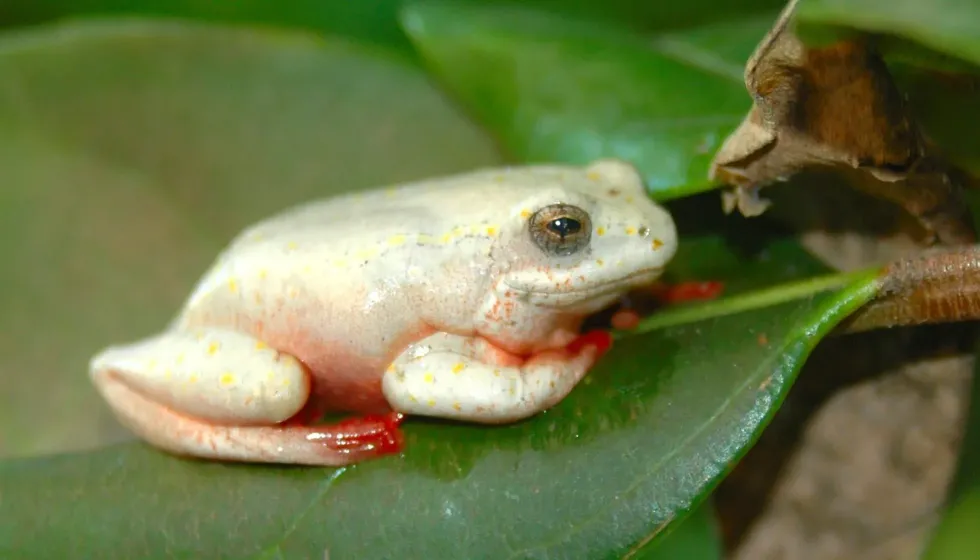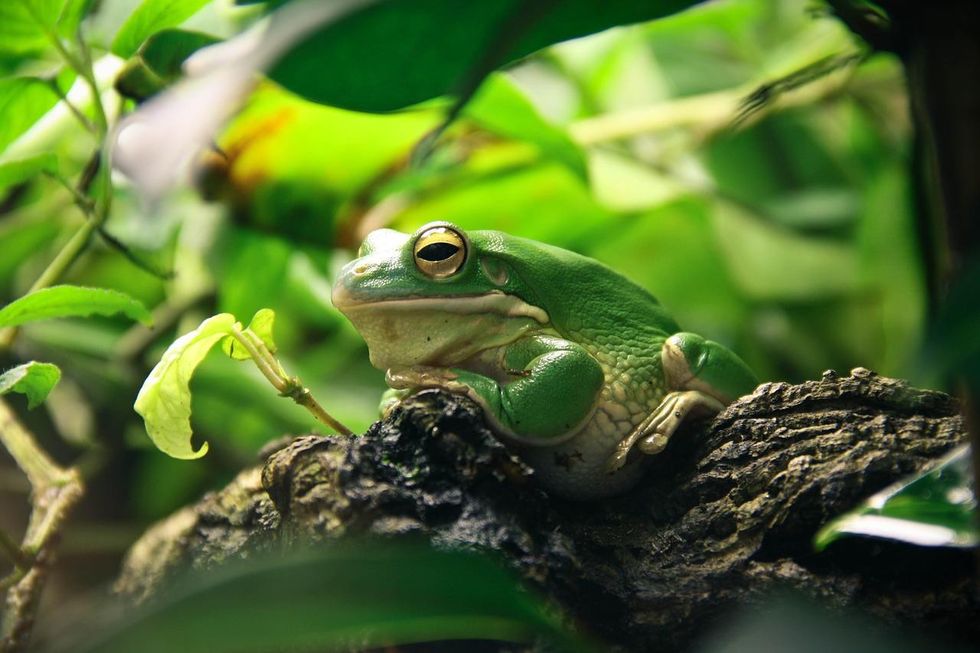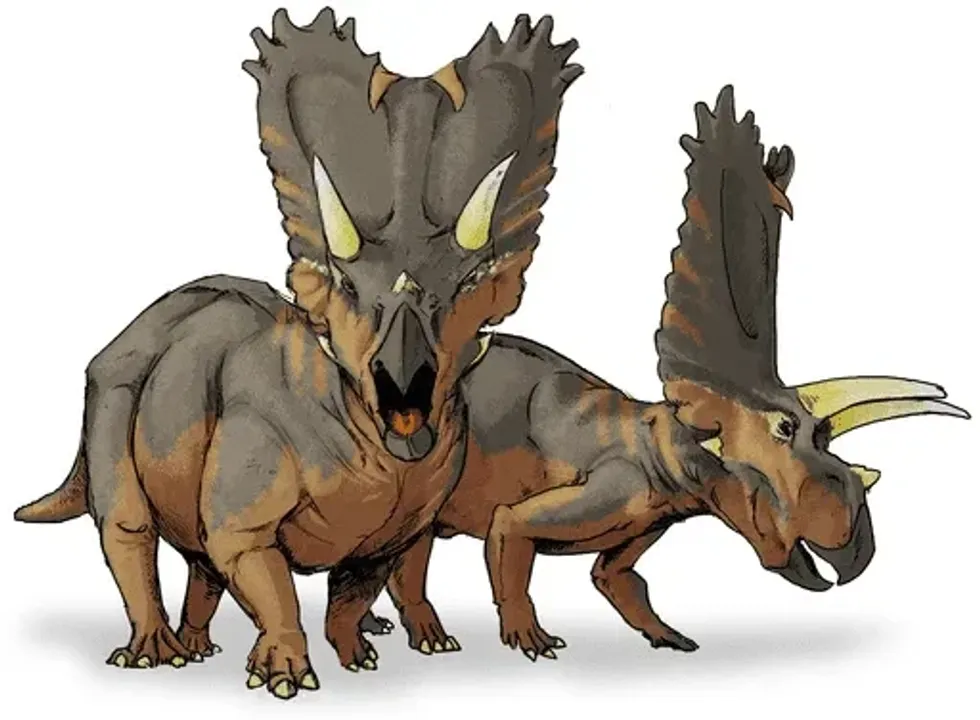There are more than 140 species of reed frogs in the world. These are colorful frogs that are extremely attractive in appearance.
These frogs are primarily insectivores and are considered to be harmful by various indigenous people owing to their appearance which attracts the eye. However, they are not harmful beings but it is best to keep a safe distance while observing them.
Reed frogs are small to medium-sized frogs and native to Sub Saharan regions, Madagascar and Seychelles.
They are often found in the international pet trade, however, this practice has not caused significant impacts to their population yet. For more relatable content, check out the African clawed frog and the African bullfrog.
African Reed Frog Interesting Facts
What type of animal is an African reed frog?
The African reed frog (Hyperolius viridiflavus) is a type of frog species of animals and resides primarily in trees, low bushes, and grasses.
What class of animal does an African reed frog belong to?
African reed frog (Hyperolius viridiflavus) class is Amphibia, family Hyperoliidae, and genus Hyperolius. They are colorful frogs.
How many African reed frogs are there in the world?
African reed frog's (Hyperolius viridiflavus) exact population is not evaluated and they are classified as of Least Concern by the IUCN Red List and are not threatened.
Where does an African reed frog live?
African reed frog (Hyperolius viridiflavus) can be seen near trees, grasses, bushes as well as savanna and wetlands. They reside close to regions where they find appropriate food and shelter. They prefer to rest on the ground at most times. They are most active at night.
What is an African reed frog's habitat?
The African reed frog's (Hyperolius viridiflavus) habitat constitutes savannas and wetlands located in Sub Saharan Africa, Seychelles, Tanzania, and Madagascar. They require adequate temperature conditions to survive else they might die.
Who do African reed frogs live with?
African frogs co-exist with their own kind as well as other species in the wild. Their bright color makes it easier for them to be identified by prey species in Africa.
How long does an African reed frog live?
African reed frogs are estimated to live for one year. The world's oldest frog was found in New Zealand named Wellington and lived 37 years. The spring-peeper is another species that has the shortest lifespan of just three years apart from African reed frogs.
How do they reproduce?
African reed frog (Hyperolius viridiflavus) reproduction occurs sexually. The breeding season occurs during rainy weather. Males move to the shallow regions of ponds or lakes and attract females using choruses during the breeding season.
Males maintain a distance while doing the same. Females on the other hand tend to prefer bigger species of males during the breeding season to mate with. Once females approach males they initiate a process known as the amplexus.
The eggs are then laid underwater on vegetation. Females lay multiple clutches per season an estimate of around 330 eggs. The eggs take eight weeks to metamorphose into juveniles once they hatch.
What is their conservation status?
The African reed frog (Hyperolius viridiflavus) is classified as of Least Concern by the International Union For Conservation Of Nature (IUCN). The IUCN red list contains information about a list of threatened species and other species as well. The African reed frog is not a threatened species.
African Reed Frog Fun Facts
What do African reed frogs look like?
African reed frogs are colorful frogs that instantly attract the eye with certain dark patches or designs. The colors range from solid green to light brown to spotted as well as striped ones.
They are polymorphic in color pattern. In the case of this species, females are more colorful than males.
They have horizontal pupils, a brief snout, and colorful webbed feet and toes. Males have a dilatable vocal sac while females have a gular flap. They are often confused with common reed frogs and painted reed frogs (Hyperolius marmoratus), however, they are separate species, and their skin may be poisonous.
Other similar species include the African emerald reed frog and the African yellow reed frog. Their length is 1-3 in (2.54-7.62cm).
How cute are they?
Reed frog is a least concern species which is cute frog species and specifically attractive to look at since they are innately wild animals its rare to spot them near human settlements.
How do they communicate?
African reed frog (Hyperolius viridiflavus) have a melodious calling which is a characteristic feature in these species. Male species have two distinct calls a territorial and a mating call.
African reed frog (Hyperolius viridiflavus) have keen visual perception and are capable of capturing insects using their bulging eyes and horizontal pupils. They also make use of body language to communicate.
How big is an African reed frog?
The African reed frog is 1-3 in (2.54-7.62cm) in length which is ten times bigger than the smallest species of frogs in the world, the amauensis, which is 0.30 in (0.762cm).
How fast can an African reed frog move?
African reed frogs, Hyperolius viridiflavus, have relatively good speeds while moving. They also are efficient swimmers and lay eggs underwater in vegetation.
How much does an African reed frog weigh?
The African reed frog weighs 0.002-0.004 lb (1-2 g). The heaviest treefrog species ever is the goliath frog, weighing 7.1 lb (3.25 kg).
What are their male and female names of the species?
Adult male and females are not addressed differently. They can be distinguished on the basis of their outward appearance and behavior. Females tend to be bigger in size as compared to males and search for bigger males to mate with.
What would you call a baby African reed frog?
Baby African reed frog can be referred to as a tadpole in the initial stages of their life until they grow into mature adults. Juveniles develop independently through a process of metamorphosis once female lay them into the water body and develop into an adult and stay close to plants in water bodies.
What do they eat?
African reed frog diet is insectivorous. Their diet consists of worms, flies, and crickets and other similar species of insects. In most instances these species prefer crickets over anything else.
How far can they jump?
Reed frogs can jump high just like other species of frogs. The frog that hold record for longest jump is the South African sharp nosed frog and can leap 130 in (330 cm) one leap. Frogs may jump as a escape mechanism as well.
Would they make a good pet?
Yes, frogs make a great pet to those who love them. African reed frog care is simple just like other species of frogs and just needs as little adjustment and time.
They need to be kept in a suitable habitat with proper temperature and other facilities. The exact temperature regulations can be confirmed with a professional in the field or you could also search it online however, its best to consult a professional.
Too high or low a temperature can impact their health greatly. These species of frogs are however, not easy to find except in their native region. The most popular species of frogs adopted is the African-bullfrog.
You need to keep them in an African reed frog terrarium and clarify all the legalities associated to the same. If you cannot adopt a frog due to certain special circumstances you could visit African reed frog zoo exhibits.
Did you know...
Frogs don't drink water as they absorb it through their skin. Owing to the texture of their skin they are excellent indicators of the health of the ecosystem.
Not all species of adult frogs leave their young to raise on their own. Certain species of frogs like the Asian tree frogs build nests above water so their tadpoles fall directly into water, in a similar way to other species who care for their young.
Painted reed frogs may sometimes turn into a male from a female. This is a unique ability that painted reed frogs possess which is not seen in other species of animals.
Can African reed frogs change sex?
Yes, the African reed frog changes sex and is a wild frog. Male to female sex changes happen in water bodies primarily due to high levels of estrogen released into the water. This happens only in the tadpole phase, not once they are adults.
What is unique about an African reed frog?
African reed frogs are well known for their melodious voice which is not often seen in species of frogs. African reed frog size is small to medium-sized.
They have the ability to change their color as they grow older and change their gender.
They are often compared to other wild frogs including common reed frogs, giant green African reed frog, African painted reed frog and others however they are all separate species from the same family some of whom are found on the ground.
If you wish to see these exotic and colorful beings, visit a region native to these species or find out which species are native to your region, like the bullfrog.
Here at Kidadl, we have carefully created lots of interesting family-friendly animal facts for everyone to discover! Learn more about some other amphibians including spring-peeper facts, or blue poison dart frog facts.
You can even occupy yourself at home by coloring in one of our free printable african reed frog coloring pages.








